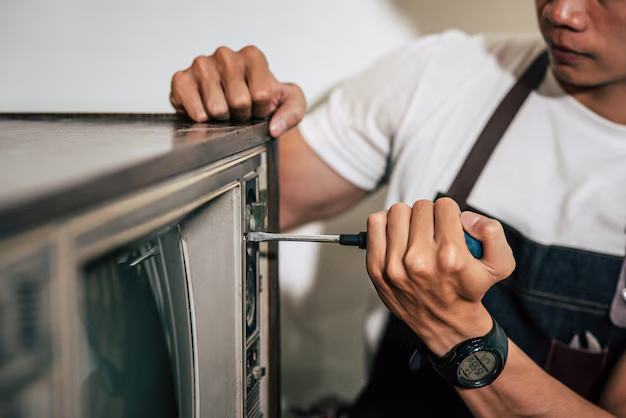Which Number on Your Refrigerator Dial Is the Coldest?
In the world of home appliances, your refrigerator stands as one of the most essential in maintaining your food's freshness and safety. Yet, despite its ubiquitous role, many people find themselves puzzled by a seemingly simple feature: the refrigerator temperature dial. And the question often arises: What number on the dial indicates the coldest setting?
Understanding Your Refrigerator's Temperature Dial
The Mystery Behind Dial Numbers
Refrigerators typically come equipped with a temperature dial that ranges from a series of numbers—often from one to seven or zero to nine. This dial controls the internal temperature of your fridge, influencing how cold the compartment gets. However, confusion often stems from whether a higher or lower number represents the coldest setting. Generally, in many refrigerators, a higher number equates to a colder setting, meaning '7' or '9' is usually the coldest. However, always consult your specific appliance's manual to confirm, as some models may vary.
Why Dial Settings Matter
Correctly setting your refrigerator's temperature is crucial. It ensures that food stays fresh, minimizes bacterial growth, and helps keep your utility bills in check. If the fridge is too cold, certain foods may freeze, while a setting too warm can lead to spoilage.
Optimizing Temperature for Food Safety
Ideal Refrigerator Temperature
For optimal food safety, the temperature inside your refrigerator should be maintained at or below 40°F (4.4°C). This setting helps slow the growth of bacteria and maintain the freshness of perishables.
Storing Foods Correctly
- Top Shelves: Store ready-to-eat foods like leftovers and drinks.
- Middle Shelves: Perfect for dairy products, as this area maintains consistent temperatures.
- Bottom Shelves: Raw meat, poultry, and fish should be stored here, where it's coldest, to prevent drips contaminating other foods.
- Crisper Drawers: Designed to control humidity, these drawers are ideal for fruits and vegetables.
Practical Tips for Temperature Monitoring
To ensure your fridge is at the correct temperature, consider investing in a refrigerator thermometer. These inexpensive tools can provide an accurate reading, safeguarding your food safety efforts.
Related Subtopics: More Than Just a Dial
Temperature Variations: Beyond the Dial
Refrigerators are more than their temperature dials. Factors such as the frequency of door openings, ambient kitchen temperatures, and how full your fridge is can influence internal temperatures. Each time you open the door, warm air enters and affects stability. Therefore, aim to minimize door openings and ensure your refrigerator isn't overcrowded, allowing air to circulate freely.
Diagnosing Issues: When Your Fridge Isn’t Cold Enough
Symptoms of an improperly working fridge include frequent thawing, spoiled food, or odd odors. If adjusting the dial doesn't resolve these issues:
- Examine Seals: Check the door seals for gaps or tears.
- Clean Coils: Dirty condenser coils can impede cooling. Regularly clean them to maintain efficiency.
- Check Vents: Ensure vent areas aren't blocked by food packages.
Energy Efficiency and Environmental Impact
Did you know a properly adjusted refrigerator can save energy? By setting the fridge at the ideal temperature and keeping it well-maintained, you reduce the appliance's work, thus saving on electricity. Here are some quick tips:
- Regular Defrosting: If your model requires manual defrosting, a regular defrost schedule enhances performance.
- Location Matters: Keep your refrigerator away from heat sources like ovens or direct sunlight.
- Seal Check: Regularly inspect and maintain door seals to prevent cold air leakage.
Visual Summary: Key Tips for Optimal Fridge Temperature 🌡️
Here’s a quick checklist to maintain your fridge efficiently:
- 📈 Temperature Setting: Aim for about 37-40°F (3-4°C).
- 🥶 Coldest Number? Usually the highest on the dial.
- ⏰ Minimize Openings: Reduce warm air intake.
- 🌬️ Optimize Airflow: Don’t over-stuff; organize effectively.
- 🤖 Monitor: Use a fridge thermometer for accurate readings.
- 🔧 Maintenance: Clean coils, check seals regularly.
- 🌿 Energy Saving: Efficient setup reduces electricity usage.
Wrapping It Up: Knowing the Number
Properly understanding and utilizing your refrigerator’s temperature dial goes a long way in ensuring food safety and energy efficiency. Next time you find yourself in front of that dial, you'll be equipped with the knowledge to set it just right, keeping your groceries fresher, longer. And remember, when in doubt, your refrigerator’s manual is your best friend in decoding the mystery of those numbers. Keep it handy, follow these tips, and your fridge will thank you every time you open its door.
